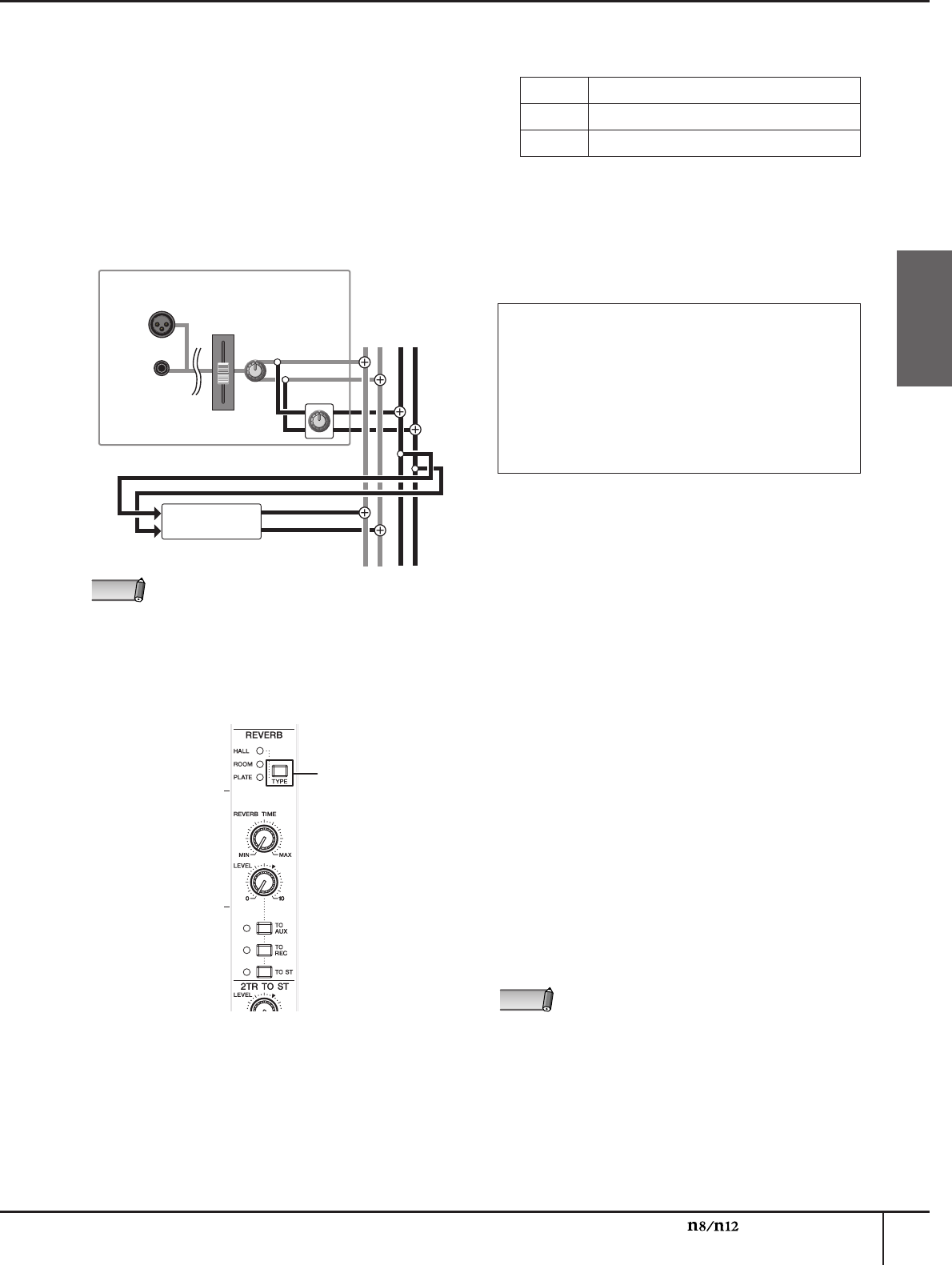
A Hands-On Guide to the n8/n12
Owner’s Manual
31
English
Applying reverb
Using an effect unit, such as an internal digital reverb,
can “effectively” add polish to a stereo mix. In this
example, let’s use the internal digital reverb to apply
reverb to a stereo mix.
The internal digital reverb uses its dedicated reverb
bus. Send each input channel signal to the reverb bus
and adjust the reverb for each channel.
The mixed signal in the reverb bus is then routed to the
digital reverb. Digital reverb is then applied. You can
route the output from the digital reverb to the stereo bus
or other buses.
1.
Press the REVERB [TYPE] switch in the Master
Control section repeatedly to select the desired
reverb type.
The internal digital reverb provides the following
three reverb types:
2.
Set the [TO AUX], [TO REC], and [TO ST]
switches on or off to determine the destination of
the digital reverb output.
You can select multiple destination buses. If the [TO
ST] switch is turned on, the digital reverb output
(return signal) will be routed to the stereo bus, thus
adding reverberation to the stereo mix.
3.
Rotate each input channel [REVERB] control
clockwise to adjust the digital reverb level (send
level).
You can adjust the digital reverb level using the
input channel [REVERB] controls. In this example,
raise this send level high enough so that you will be
able to listen to and check how much reverb has
been applied, then fine-adjust the level later.
4.
Rotate the REVERB [LEVEL] control in the Master
Control section left or right to adjust the digital
reverb output level (return level).
Adjusting the digital reverb output level will adjust
how much reverb is applied to the entire sound.
A control set to the “▼” position indicates that the
output level is nominal (0 dB).
5.
Rotate the REVERB [LEVEL TIME] control left or
right to adjust the digital reverb duration (reverb
time).
As you rotate the control counter-clockwise, the
digital reverb time gets shorter. As you rotate the
control clockwise, the reverb time gets longer.
Adjust the reverb time until you hear the
reverberation you desire.
6.
If necessary, rotate each input channel [REVERB]
control to fine-adjust the amount of digital
reverb.
This routing is called “send and return.” It allows one
effect to be shared by multiple channels. Typically,
send and return routing is used for reverb and other
ambient effects.
STEREO BUS L
STEREO BUS R
REVERB BUS L
REVERB BUS R
INPUT CHANNEL
PAN
REVERB
INPUT A
INPUT B
digital reverb
NOTE
Select a type.
HALL Simulates reverberation of a concert hall.
ROOM Simulates reverberation of a room.
PLATE Simulates reverberation of a plate echo.
If a monitoring signal is being sent to the players via
the AUX bus, turning only the [TO AUX] switch on will
apply reverb to only the monitoring signal, leaving
the stereo mix without reverb. For example, even if
you are recording a vocal without reverb, applying
reverb only to the monitoring signal may help the
vocalist to sing more easily or get into the “groove.”
In this way, changing the destination of the reverb
output enables very flexible recording.
Always be careful not to apply too much reverb. Too
much reverb can tip the mix balance or wash out the
mix and reduce the overall clarity of the stereo
image.
NOTE


















